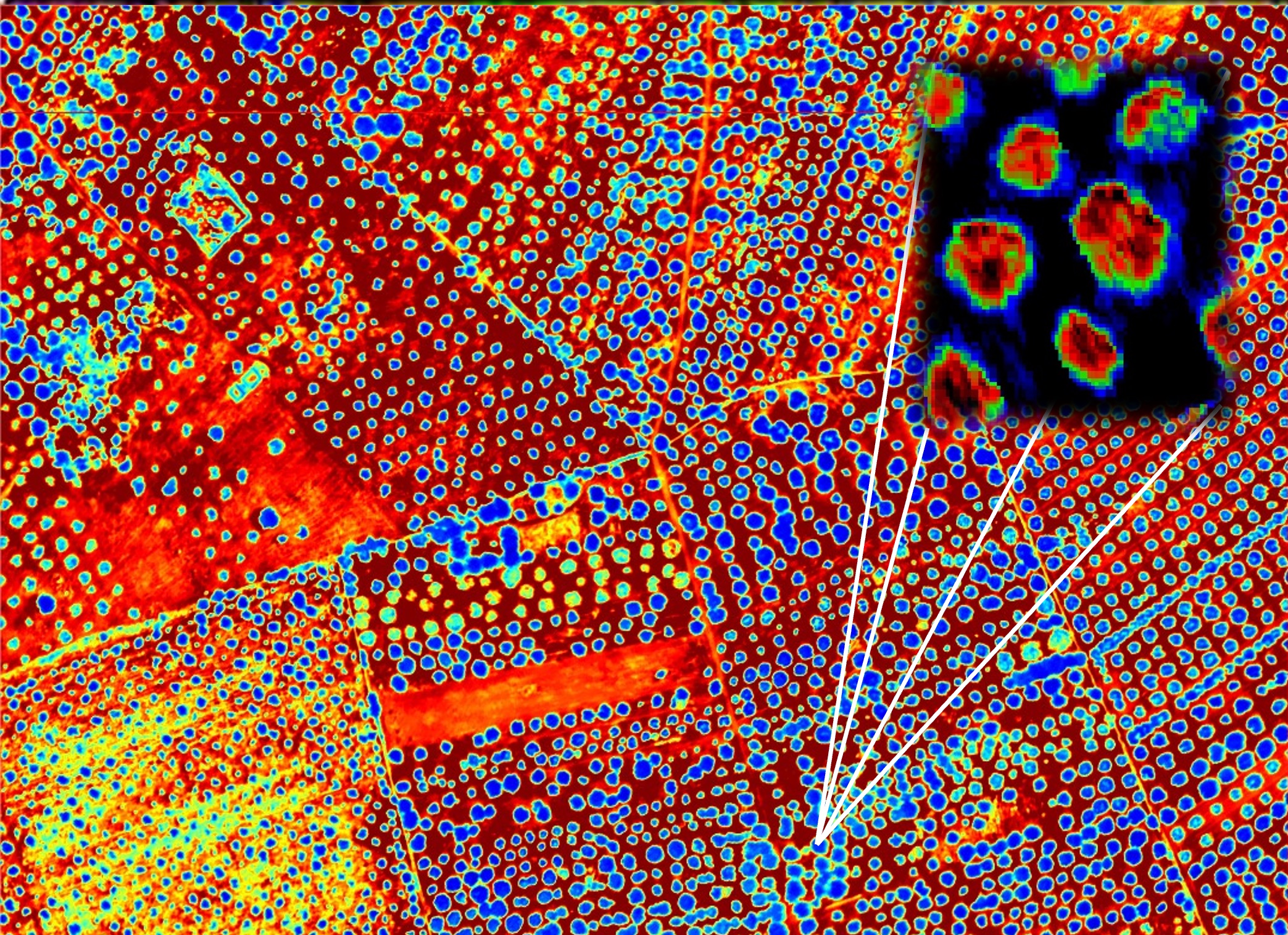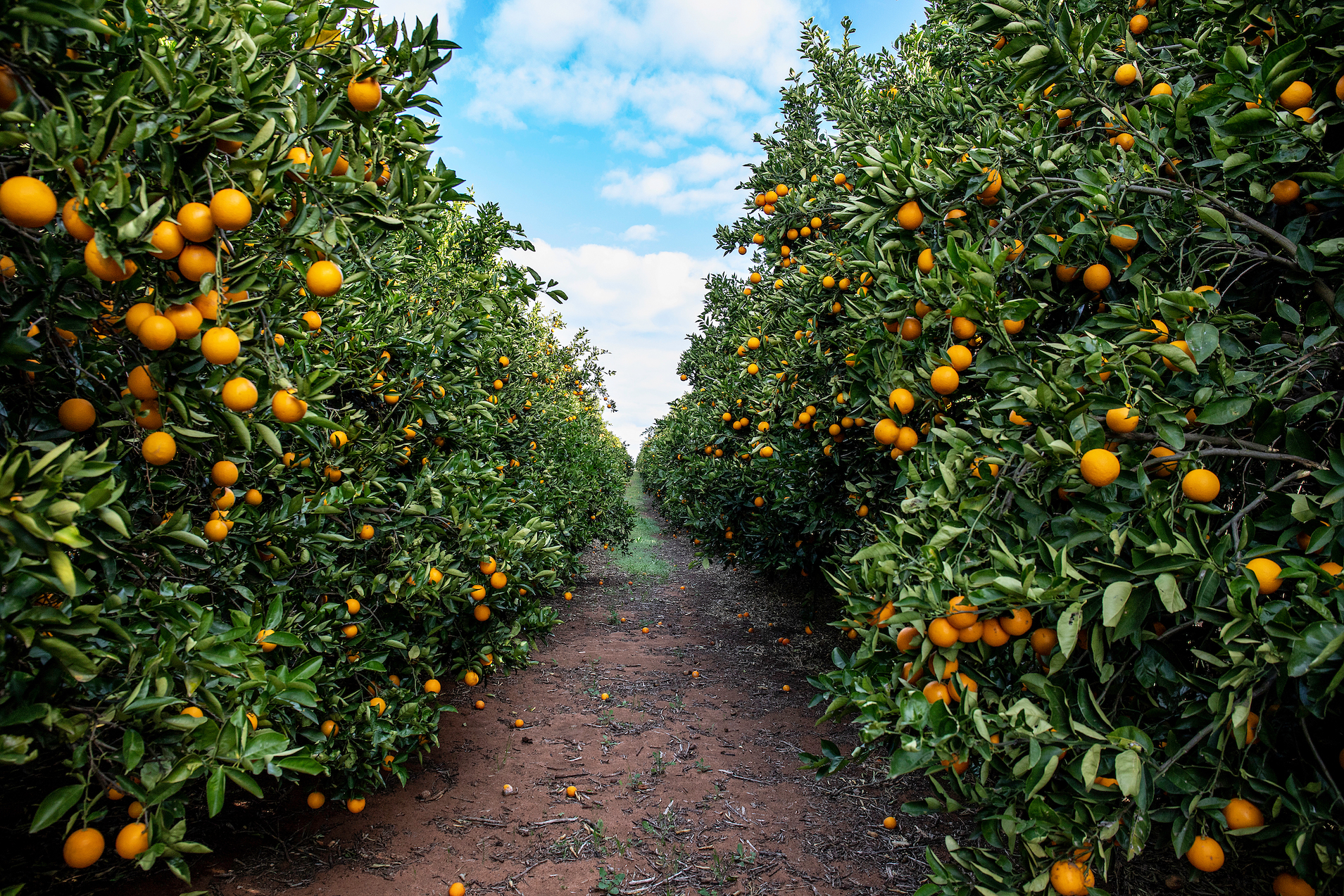
Environment
Protecting Australia’s citrus industry

The spread of Xf bacteria is a huge threat to global agriculture, but research is enhancing our capacity to detect it in crops using airborne monitoring
Published 27 October 2021
The number one biological security threat to Australian agriculture is a bacteria most will never have heard of – Xylella fastidiosa (Xf).
But the way things are going, we will be hearing a lot more about Xf.
This so far incurable bacterial disease causes plants to wither and possibly die (dieback), scorching and browning leaves and reducing the size of fruit in a wide variety of important crops including olive, almond, avocado, coffee, grapevine, citrus and many herbaceous and forest species. It could also infect native Australian and ornamental plants.

Overseas, Xf is arguably the greatest disease threat to food security and agricultural productivity worldwide.
In Apulia, Italy, Xf has left devastating scenes of dead and dying olive trees in its wake and it could cost $US22 billion to control the outbreak there over the next 50 years. If it spreads through Europe the losses in just the olive industry alone are projected to reach up to €5.2 billion per year.

Environment
Protecting Australia’s citrus industry
Already widely distributed in the Americas, it has been identified in Spain, France, Israel, Iran and Taiwan, raising international alarms about the potential for a global Xf epidemic.
The key to containing Xf is early detection, which isn’t easy given that some infections don’t cause visual symptoms until 8-10 months. And during this period, the asymptomatic plants continue to be infectious.
But our new research takes us a step closer to developing a rapid and more accurate large-scale screening process of at-risk crop species by enhancing the effectiveness of airborne scanning that uses hyperspectral imaging.
Hyperspectral images allow us to “see” in more fine-grained wavelengths, and our previous research has already demonstrated that we can use it to detect Xf in olive trees before symptoms were visible.
But a common problem is that the remote sensing algorithms that scan the hyperspectral images can’t always distinguish the symptoms of Xf from the symptoms of other pathogens or environmental stress like lack of water or nutrients.

This aspect is particularly relevant for pathogens like Xf that invade a plant’s vascular (circulatory) system because the bacteria eventually block the water flow, causing similar symptoms that can be wrongly attributed to lack of water.
Just as visibility and rapid testing were essential to managing COVID-19 in humans before the deployment of vaccines, we need to be able to see where Xf is present and where it isn’t, while reducing false positives, where an algorithm incorrectly indicates Xf due to other factors.

Sciences & Technology
Safeguarding Australia’s dairy herd
Published in Nature Communications, our research with international partners from the EU, UK, and US, demonstrates that hyperspectral imaging and a novel algorithm can distinguish the disease from water-induced stress and increase Xf detection to up to 92 per cent accuracy while reducing uncertainty to below 6 per cent across different hosts, including almond and olive, and across other vascular pathogens.
The research is based on scanning 1 million infected and healthy trees in seven regions in Europe.
The technology used in this study is available in Australia as part of our Airborne Remote Sensing Facility – HyperSens Lab, established across the Faculty of Veterinary and Agricultural Sciences (FVAS) and the Faculty of Engineering and Information Technology (FEIT) at the University of Melbourne.
With two hyperspectral imagers and one thermal camera, the facility can scan thousands of hectares in the visible, near-infrared and thermal spectral regions of light, generating images where every single tree or vegetation pixel is acquired with hundreds of narrow spectral wavebands.

By using algorithms based on physical models and machine learning, we can retrieve spectral plant traits directly linked with the physiological condition and stress levels of each tree, generating a pool of spectral screening indicators related to subtle changes occurring to infected vegetation.
In a trial in Victoria last year, funded by the Department of Agriculture, Water and Environment (DAWE) as part of the National Xylella Preparedness Program, we were able to scan several thousand hectares of healthy almond, citrus and olive trees with varying water and nutrient status levels as baselines to better adapt the Xf detection models developed in Europe for the particular varieties and management practices in Australian agriculture.

Sciences & Technology
Smaller plants show promise for future food crops
These methods enable the collection and delivery to the grower of water stress and nutrient maps for each tree in an orchard within 24 hours. These are innovative precision agriculture technologies to support the efficient use of resources and optimizing yields while protecting the environment.
And in the context of biosecurity, if an Xf outbreak occurs in Australia or elsewhere, our methods could potentially be used to rapidly detect and prevent the spread of the disease.
Global warming and international trade are causing unprecedented risks to agriculture, particularly with emerging and re-emerging pathogens that cause yield losses exceeding 30 per cent in food-deficit regions with fast-growing populations.
At the same time, we need to increase global food production by 50 per cent in the next 30 years to achieve food security.
These facts underscore the importance of developing global plant disease and precision agriculture monitoring methods that use advanced technologies. But the answer isn’t only to be found in technological advances, but also in collaborative research across disciplines.

The future requires joint efforts between agricultural and engineering disciplines to create networks of hyperspectral sensors mounted on drones, as well as high-altitude drones and satellites that can concurrently screen for disease outbreaks and assess water and nutrient limitations at a global scale.
Until we get there, the rapid detection through airborne and drone-based hyperspectral imaging is our best hope for protecting Australia’s $A15 billion horticulture industry and preventing Xf’s spread around the world.
Banner: Getty Images